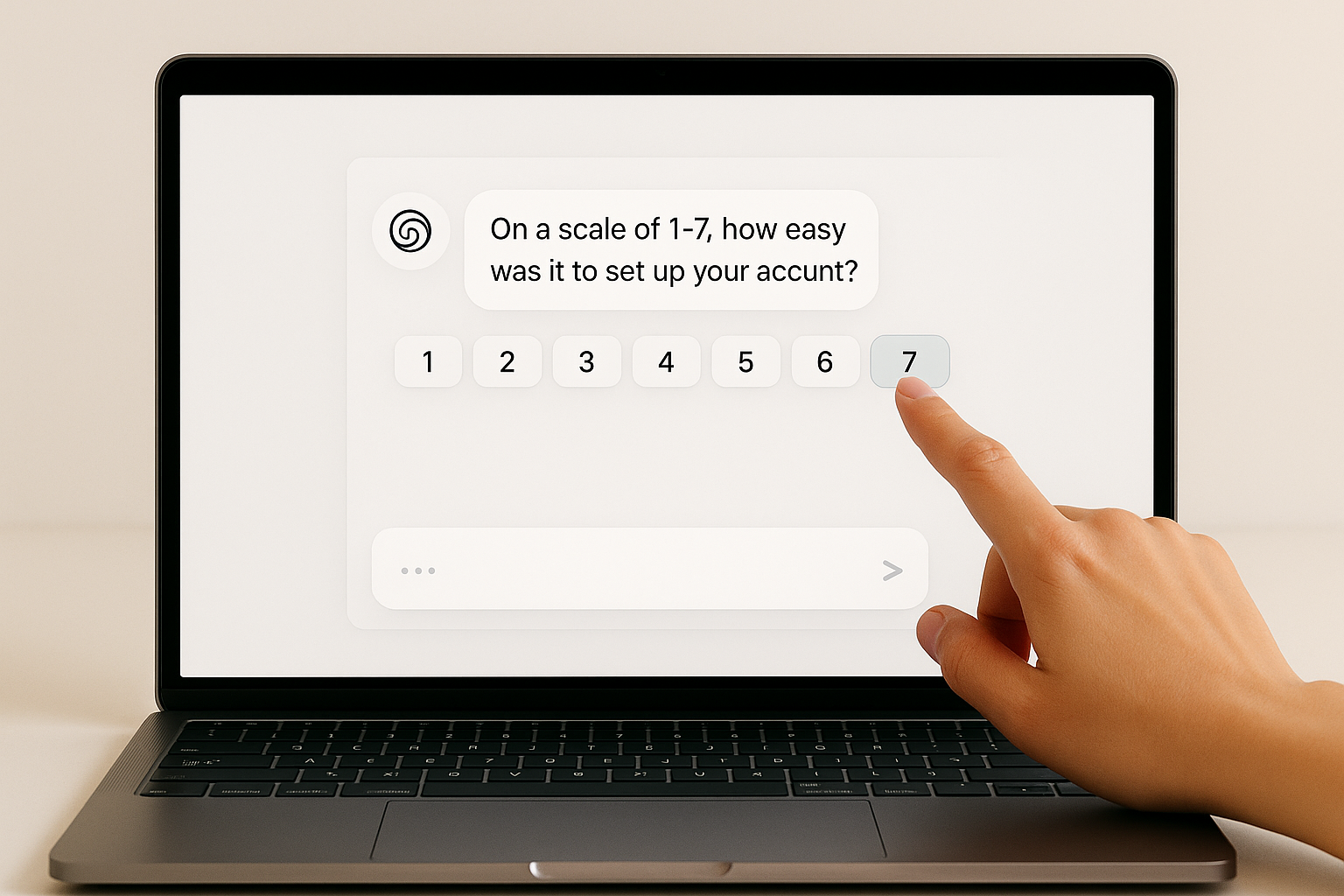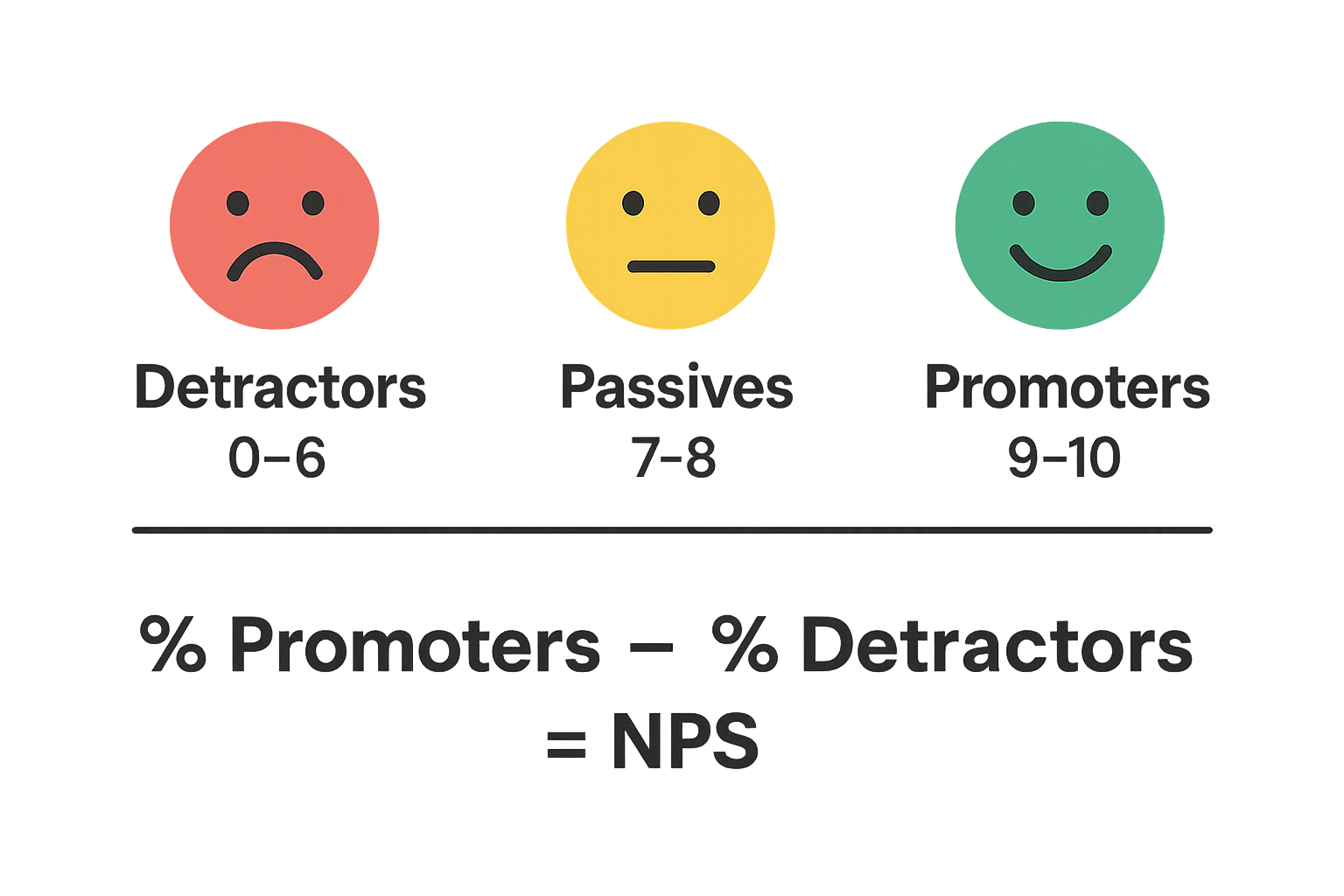The Essential Guide to Customer Experience Metrics
You're flying blind if you don't collect customer feedback. But choosing the wrong metric is just as bad-it's like using a thermometer to measure wind speed. You get a number, but it tells you nothing useful about the problem you're trying to solve. The result is a dashboard full of vanity metrics and a team no closer to understanding the customer experience.
The stakes are higher than ever. Recent research on customer experience (CX) reveals impressive financial returns for companies that invest in it. Organizations earning $1 billion annually can generate an additional $700 million in revenue within three years of CX investments - Customer Experience (CX) Statistics for 2025. For SaaS companies specifically, this potential revenue boost can reach up to $1 billion. This isn't just about making people happy; it's about survival. This guide cuts through the noise of CSAT vs. CES vs. NPS. We'll break down what each metric really tells you, when to use it, and how to combine them to get a complete picture of your customer health. No fluff, no acronym soup—just the essentials to help you measure what matters.
Table of Contents
- What is CSAT (Customer Satisfaction Score)?
- What is CES (Customer Effort Score)?
- What is NPS (Net Promoter Score)?
- The Showdown: CSAT vs. CES vs. NPS Side-by-Side
- You Don't Have to Choose: Using Them Together
- The Future of Feedback is Conversational
What is CSAT (Customer Satisfaction Score)?
CSAT, or Customer Satisfaction Score, is the "in-the-moment" metric. It measures how satisfied a customer is with a specific interaction or experience right now.
Think of it as asking, "Did you enjoy your meal?" right after the waiter clears the dessert plates. It’s immediate, transactional, and provides a snapshot of a single touchpoint.
The question is typically some variation of: "How satisfied were you with [your recent purchase / our support today]?"
The answer is usually captured on a 5-point scale, often represented by stars or emojis, where:
- 5: Very Satisfied
- 4: Satisfied
- 3: Neutral
- 2: Unsatisfied
- 1: Very Unsatisfied
The final score is calculated as the percentage of "Satisfied" and "Very Satisfied" responses.
Pros of CSAT:
- Simple & Intuitive: Everyone understands what "satisfaction" means.
- Real-time Feedback: It captures the customer's immediate feeling about a specific interaction.
- Versatile: You can use it across the entire customer journey, from a purchase to a support ticket.
Cons of CSAT:
- Poor Predictor of Loyalty: A customer can be satisfied with one transaction but still churn next month.
- Lacks Context: It tells you what but not why. A low score doesn't explain the root cause.
- Cultural Bias: The definition of "good" service can vary wildly between regions.
When to Use CSAT:
Use CSAT to measure the quality of specific, transactional touchpoints.
- After a customer support chat or call.
- Immediately following a purchase or checkout.
- After a customer reads a knowledge base article.
What is CES (Customer Effort Score)?
CES, or Customer Effort Score, measures how easy it was for a customer to get their issue resolved or their need met. It’s the "friction" metric.
The core idea, backed by research from sources like Gartner, is that reducing customer effort is a more reliable driver of loyalty than delighting them. Back when I was working on product teams, we obsessed over removing clicks and simplifying workflows. CES is the report card for that obsession.
The question is direct: "To what extent do you agree or disagree with the following statement: The company made it easy for me to handle my issue."
It’s measured on a 7-point scale from "Strongly Disagree" to "Strongly Agree." A simpler, more modern approach is to ask: "How easy was it to interact with us today?"

Pros of CES:
- Strong Predictor of Future Behavior: Gartner's data shows that 96% of customers with a high-effort experience report being disloyal, compared to only 9% of those with a low-effort experience.
- Actionable Insights: A high-effort score points directly to friction in your processes or product.
- Focuses on Operations: It forces you to look at your internal processes and how they impact the customer.
Cons of CES:
- Doesn't Measure Emotion: A customer might find a process easy but still be unhappy with the outcome.
- Limited Scope: It doesn't capture the full picture of the customer relationship or brand perception.
When to Use CES:
Use CES to identify and eliminate friction points.
- After a customer completes a key workflow (e.g., setting up an account, updating billing info).
- Following an interaction with your support team to measure the ease of resolution.
- To evaluate self-service tools like your FAQ or knowledge base.
What is NPS (Net Promoter Score)?
NPS, or Net Promoter Score, measures long-term customer loyalty and brand sentiment. It asks the "ultimate question" to gauge a customer's willingness to recommend your product or service to others.
This isn't about a single transaction; it's the "relationship status" metric. Is this customer a true fan who would advocate for you, or are they quietly looking for an exit? It was developed by Fred Reichheld and Bain & Company and has become a C-suite level metric for gauging company health.
The question is always the same: "On a scale of 0 to 10, how likely are you to recommend [Company Name] to a friend or colleague?"
Based on their response, customers are grouped into three categories:
- Promoters (9-10): Your loyal enthusiasts who will keep buying and refer others.
- Passives (7-8): Satisfied but unenthusiastic customers who are vulnerable to competitive offerings.
- Detractors (0-6): Unhappy customers who can damage your brand and impede growth through negative word-of-mouth.
The NPS score is calculated by subtracting the percentage of Detractors from the percentage of Promoters.

Pros of NPS:
- Measures Loyalty: It's a strong indicator of future growth and customer retention.
- Easy to Benchmark: The standardized question makes it easy to compare your score to industry averages.
- Simple for Everyone: From the CEO to an intern, everyone understands the goal is to create more Promoters.
Cons of NPS:
- Lagging Indicator: It reflects past performance and may not catch new problems immediately.
- Lacks Specificity: A low score doesn't tell you what to fix. It must be paired with a follow-up question.
- Can be Influenced by Factors Outside Your Control: A customer might love your product but be unwilling to recommend things in general.
When to Use NPS:
Use NPS to measure the overall health of your customer relationship.
- Periodically (e.g., quarterly or semi-annually) to track trends over time.
- After a customer has used your product for a significant period.
- To segment customers for follow-up marketing or feedback sessions.
The Showdown: CSAT vs. CES vs. NPS Side-by-Side
Still confused? Here’s a simple breakdown.
You Don't Have to Choose: Using Them Together
The real answer to "CSAT vs. CES vs. NPS" is that it's not a competition. The smartest companies use them together to build a complete feedback loop.
- CSAT tells you if a specific interaction went well.
- CES tells you if that interaction was easy.
- NPS tells you if all those interactions are adding up to a loyal customer.
Imagine a customer journey:
- They sign up for your product. A week later, a CES survey asks how easy the onboarding was.
- They contact support with a question. After the ticket is closed, a CSAT survey measures their satisfaction with the agent.
- Six months later, an NPS survey gauges their overall loyalty to your brand.
This is why we built FormLink.ai. The old way of doing this involved juggling three different survey tools, creating clunky emails, and trying to stitch the data together. It was a nightmare. We believe feedback should be conversational and integrated. You should be able to ask the right question at the right time, right inside your app or on your site, without making the user feel like they're taking a test.
The Future of Feedback is Conversational
Stop thinking in terms of static, boring surveys. The goal isn't just to collect a score; it's to understand your customers and act on their feedback. Whether you choose CSAT, CES, NPS, or a combination of all three, the key is to make the process effortless for the user and actionable for your team.
More Resources
- Why You Need to Stop Trying to Delight Your Customers (HBR): The foundational article on the principles behind Customer Effort Score.
- AI Forms by FormLink.ai: Learn how AI-native forms can make feedback collection conversational and intelligent.